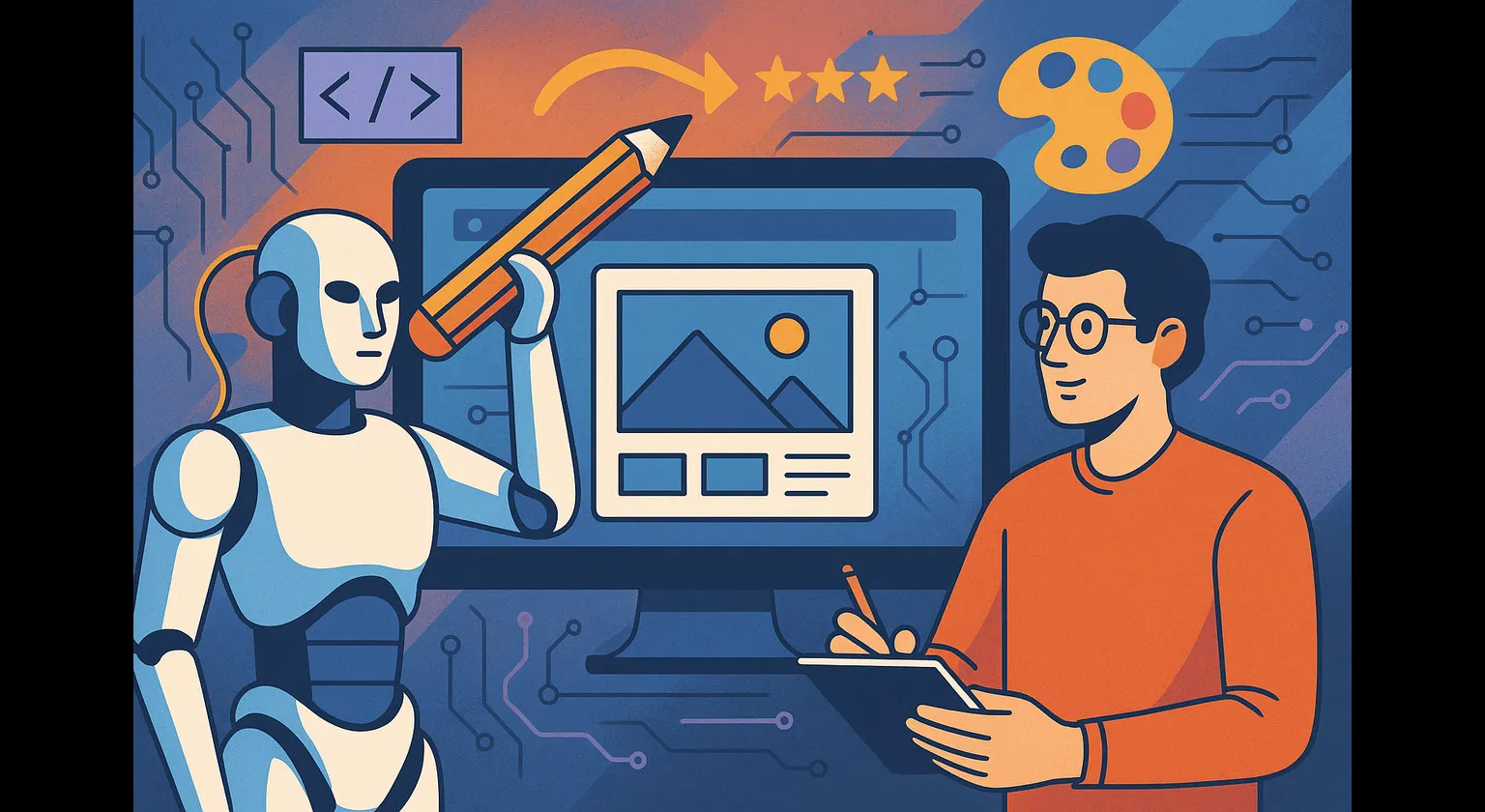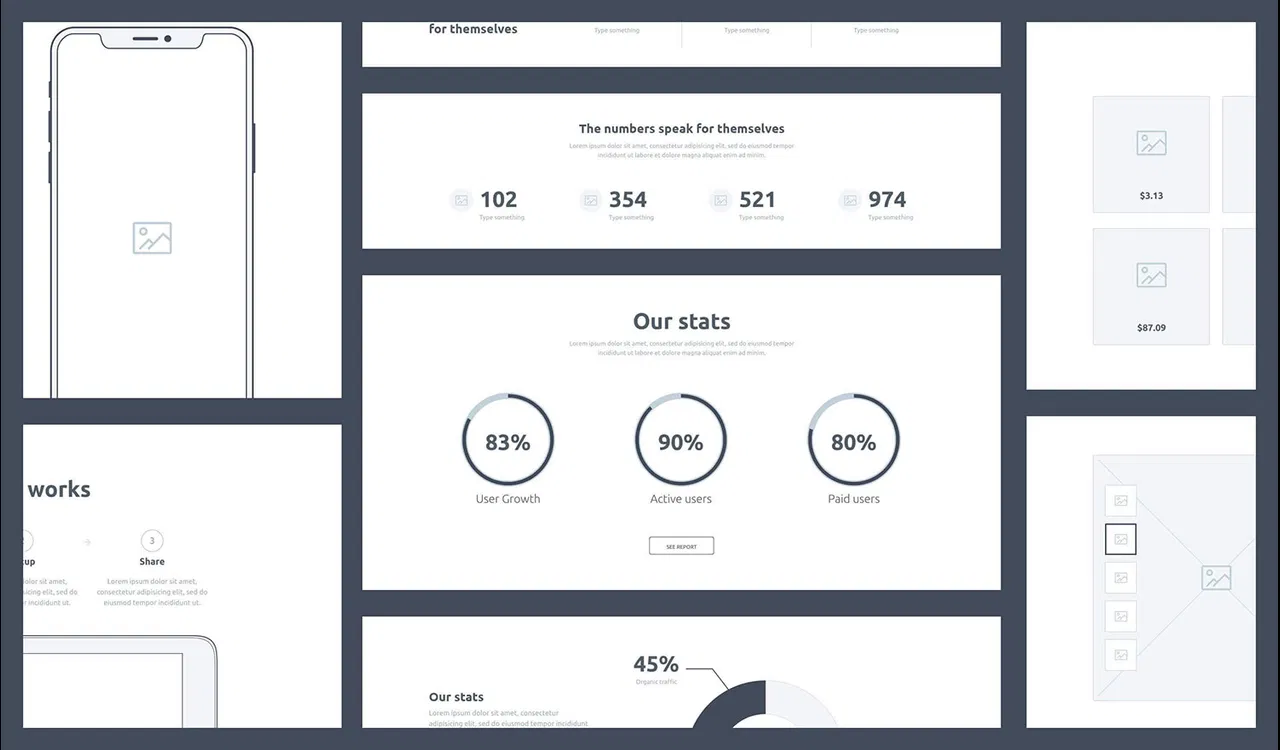"It reminds me of the early days of the web—we're in completely un-charted waters." — Jason Cowsill
Today's product teams are under pressure to deliver polished digital experiences at a speed—and a cost—that would have felt impossible even a year ago. At Singlemind, we've re-engineered our entire workflow around AI-augmented design so we can meet that challenge for our ideal customers: growth-stage SaaS and B2B companies that need to ship reliable, front-end experiences fast—without trading away brand nuance, accessibility, or scale.
Below is a behind-the-scenes look at how our new process works, punctuated with four 60-second YouTube Shorts. Each clip comes straight from a recent conversation between our Creative Director, Jason Cowsill, and CEO, Cort Buchholz.
1. From Discovery to Code in the Same Afternoon
Traditional web projects move from discovery → low-fidelity wireframes → high-fidelity comps → engineering hand-off. Each gate adds latency and risk.
In our AI-first flow we:
- Capture requirements and content strategy in a short discovery sprint.
- Jump immediately into code (Nuxt + Vue + Tailwind) and let Augment/Cursor generate a first-pass UI.
- Iterate in-browser until the experience feels right versus pixel-pushing in Figma.
"I can knock out higher-quality work in a fraction of the time it used to take." — Jason
Watch the clip above to see why Jason says coding first actually improves design quality.
2. Design Nuance Without the Hand-Off Tax
Ask any designer: pixel-perfect hover states and accessible focus rings are often the first things to fall off the backlog. With AI generating the CSS and component states on demand, our designers correct micro-interactions in seconds—right where they live, in code, preventing the "hand-off tax."
"Fixing a hover color is faster than writing a Jira ticket." — Jason
For customers whose products rely on trustworthy, brand-aligned UI (think fintech dashboards or health-tech portals), those tiny details drive adoption and retention. AI lets us keep them in scope without blowing up budgets.
3. Shipping Two Full Marketing Sites in Three Weeks
Speed matters most when it's measurable. Using this workflow we:
- Delivered two content-heavy marketing sites (dynamic calendars, blog engines, gated resources) in 21 days—a timeline that used to span entire quarters.
- Migrated 100+ legacy WordPress articles to a Markdown-based Nuxt Content stack in one evening. (Yes, AI pulled the images, SEO meta, and Frontmatter for us.)
"What would've taken three people a week now takes a weekend." — Jason
The clip above breaks down the exact hours saved—and why our clients only notice that launch day arrived early.
4. Guardrails & Governance: Why Oversight Still Matters
AI can hallucinate, over-engineer, and silently duplicate patterns if left unchecked. We mitigate that risk with:
- Component hygiene: every AI-generated slice gets refactored into a shared library before merging.
- Code reviews that teach: we use AI suggestions as teachable moments for junior devs, raising the whole team's bar.
- Design ops documentation automated directly from the repo, so designers and engineers stay in sync.
"AI's goal is to resolve the error—not protect your architecture. You still need a human steward." — Jason
What This Means for You
If you're a VP of Product, Head of Engineering, or CEO tasked with scaling a digital experience yesterday, here's the net:
- Launch in weeks, not months.
- Keep budgets flat while quality rises.
- Iterate continuously—design, content, and code evolve together.
Want to see how AI-augmented design would compress your roadmap? Let's talk.



